I am happy to say that my first article as a part of the Five Star Network, Stay Golden: The Story of Maika and Himeka, was very well received, for which I thank you all. However, I would be remiss not to apologize for it. Eight days after telling you just how much I believe in both Himeka and Maika to shine brighter than ever before moving forward, our beloved “Jumbo Princess” announced her impending retirement from in-ring competition. It’s never great to jinx one of your favorite wrestlers, let alone to do so in your first editorial release in well over two years, so I am very sorry about that, and I wish Himeka the best on her journey outside of the ring.
However, the show must go on, so I will not be dwelling on the loss of one of the best tag team wrestlers in the world today and will instead be looking to the past for today’s subject. This is partially due to my skepticism that I might jinx another beloved wrestler’s retirement but more so because of my love for classic Joshi wrestling. Although it is practically a cliche at this point, there have been few more influential performers in wrestling history than the Joshi stars of the 1980s and 1990s. For me, my first real introduction to this era of wrestling came from a fanmade music video by PUROWAVE that featured two legends of the inter-promotional era: JWP’s Cutie Suzuki and FMW’s Megumi Kudo. While the video introduced me to two of the most beloved female wrestlers of the 1990s, it was primarily the latter who made it so I couldn’t stop watching.
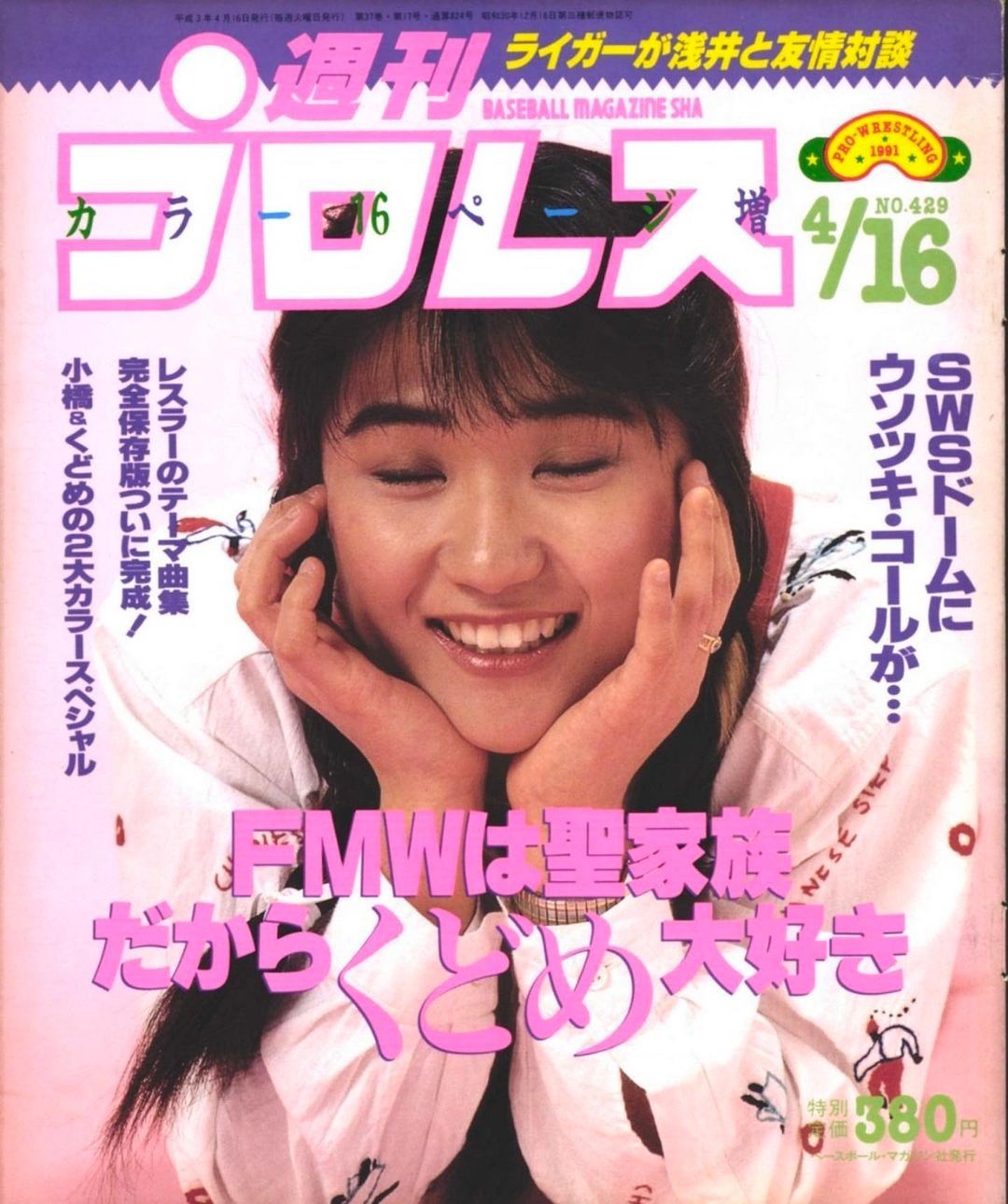
Megumi Kudo was my gateway drug into one of the greatest periods in professional wrestling history. From experiencing AJW All-Star Dream Slam for the first time to finding the most obscure LLPW shows imaginable, it was Megumi Kudo who brought me to the game. So, seeing as Kudo was the innovator of the Kudome Valentine, I decided to celebrate the holiday of love by giving the Extreme Queen her flowers and recalling some of her best opponents and rivalries from her legendary career.
Manami Toyota & Toshiyo Yamada
To start things off, I felt it was necessary to talk about the first Megumi Kudo match I ever saw. That match was none other than her tag team encounter alongside Combat Toyoda against the AJW pairing of Manami Toyota and Toshiyo Yamada. The team, officially named 1987 Team Gold Combo, was one of the hottest tag teams in Joshi wrestling throughout the early 1990s, winning the UWA Tag Team Championships in Mexico at the very beginning of 1992 before winning the AJW-sanctioned 3WA Tag Team Championships from Aja Kong and Bison Kimura just a few months later. The duo was also known for their singles expertise, both separately and against one another, but that is a story for another time.
This tag team expertise set the Gold Combo up to be prominently featured in the brewing inter-promotional warfare between AJW, LLPW, JWP, and FMW. The hardcore delinquents and AJW were the first companies to stage a crossover bout, with Megumi Kudo and Combat Toyoda facing Bull Nakano and Akira Hokuto at FMW’s 3rd Anniversary Show. Kudo and Toyoda lost this match, but the door remained open for other FMW stars, Eriko Tsuchiya and Yoshika Maedomari, to debut in AJW and wreak havoc, garnering an even nastier reputation for the women of FMW within the premier women’s promotion.
This led up to AJW All-Star Dream Slam 1 in April 1993, a major crossover event that saw Megumi Kudo and Combat Toyoda find themselves in an AJW ring for the first time in nearly half a decade. You see, both Toyoda and Kudo initially made their pro wrestling debuts in AJW, both members of the AJW Dojo Class of 1986. While they were both let go from the company before the decade ended, that history in AJW followed them to Dream Slam, as they were not treated with the disdain that their fellow FMW stars were. Instead, their return to the company was celebrated. Billed as AJW in its truest form, the match was given the subtitle of “Zenjo-ism” in the leadup to the Yokohama Arena event.
Now, as for the match itself, the more times I’ve seen it, the more uncertain I feel about it. While I was initially in awe of the ferociousness that Toyoda and Kudo brought to the fight, there was also some notable messiness and miscommunication from all parties involved. However, in my most recent viewing, that sloppiness aided in my enjoyment more than it has in the past. From Toyoda throwing Yamada into the laps of the AJW legends at ringside to Kudo repeatedly disrespecting Manami Toyota as much as possible, the battle that was said to be a representation of AJW was instead a statement that FMW was not to be messed with.
While the rivalry between The Outbreakers and Gold Combo wasn’t the bloodiest or the most fiercely contested feud for Kudo, it marked the beginning of her feud with the AJW roster itself. Her undying pride as a member of FMW shone through, and when the two duos fought once more at the FMW 4th Anniversary Show on May 5th, Kudo triumphed, pinning Manami Toyota with a tiger suplex to thunderous applause. After that match, an old friend of Kudo’s from the AJW Dojo would come to congratulate her, changing the course of her year entirely.
Aja Kong
I didn’t plan on making this a chronological thing–and it won’t be after this entry–but I couldn’t pass up that segue. After pinning Manami Toyota in the center of the FMW ring, the 3WA Singles Champion Aja Kong came out to greet her two former dojo sisters. While she was less than kind to her fellow powerhouse Combat Toyoda, a handshake between Kudo and Kong was the first step on the road to Kudo’s first AJW championship match since 1987.
Throughout 1993, Kudo would continue to compete sporadically against members of the AJW roster in tag team matches but typically only found victory when she had the home-field advantage. Despite this, regardless of which company she was in, Kudo was consistently a fan-favorite, with her foundational AJW training mixed with the hard-hitting style she adopted in FMW complementing the women of AJW quite well. In August, Kudo competed in an inter-promotional tag team match similar to the ones she had prior, but this time she saw Aja Kong on the other side of the ring. Teaming alongside Miwa Sato, Kudo faced Kong and Kaoru Ito inside an FMW ring, and while Kudo ended up pinning Ito with the Kudome Valentine, it was her remarkable resilience against Aja Kong’s offense that stole the show. From there, it was decided that Kudo would be the next challenger for Kong’s 3WA Singles Championship at the St. Battle Day Final event in December 1993.
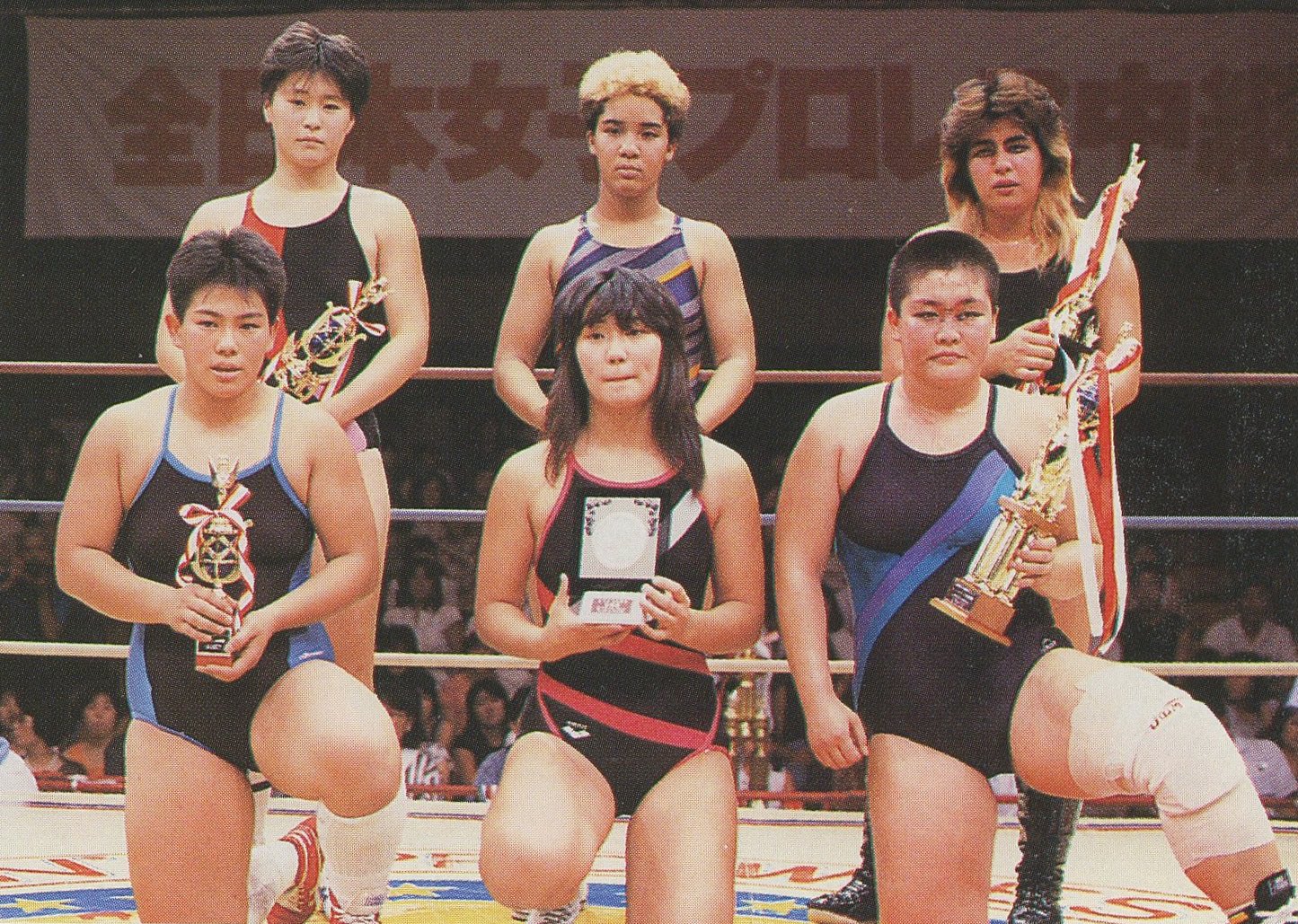
When you look up Aja Kong vs. Megumi Kudo online, there are only two taped matches readily available. One took place at St. Battle Day Final 1993 in the main event match at Ryogoku Sumo Hall, and one occurred six years prior as a part of a rookies’ tournament in AJW. Kudo would end up winning her 1987 bout against the young Erika Shishido before winning the entire tournament weeks later. However, the tables quickly turned, as that was the last singles victory Kudo ever got over her fellow ’86er. In an untaped singles match between the two one year later, it was Erika who was victorious, as Kudo prepared to leave the company just months later.
To say a different Megumi Kudo walked through the doors of AJW in 1993 than the girl who left in 1988 be one hell of an understatement. However, if she hadn’t proven that in her outing against Gold Combo, she was deadset on proving it against Aja Kong, and prove it she did. Despite being snubbed out of both the main event and semi-main event spots, the 3WA Championship match inside Sumo Hall saw Kudo and Kong go all out for over 20 minutes.
Much like most of Kudo’s best matches, her struggle drove the narrative in her bout against Aja Kong. “The Extreme Queen” often found herself being overpowered by her old friend, similar to her outings against the bigger members of the FMW roster; The only difference was that Kong was on a whole nother level. Regardless, Kudo’s persistence and evasiveness kept her in the fight up until the closing seconds, with the FMW star even getting a visual pinfall over the unbeatable monster after a ref bump saved Kong from losing AJW’s top title to an outsider.
The climax of the match, much like many of Kong’s matches during her legendary reign, was the champion’s repeated urakuens on Kudo nearly knocking FMW’s golden girl unconscious. Kong had been searching for the backfist for the duration of the match, and when she finally hit one, she didn’t stop; Kong hit Kudo with five consecutive urakuens, forcing the referee to administer a ten-count to see if Kudo could continue. As the AJW crowd cheered Kudo on, the FMW legend regrouped, delivering one last flurry of offense to her fellow ‘86er before falling to a sixth backfist and losing the match.
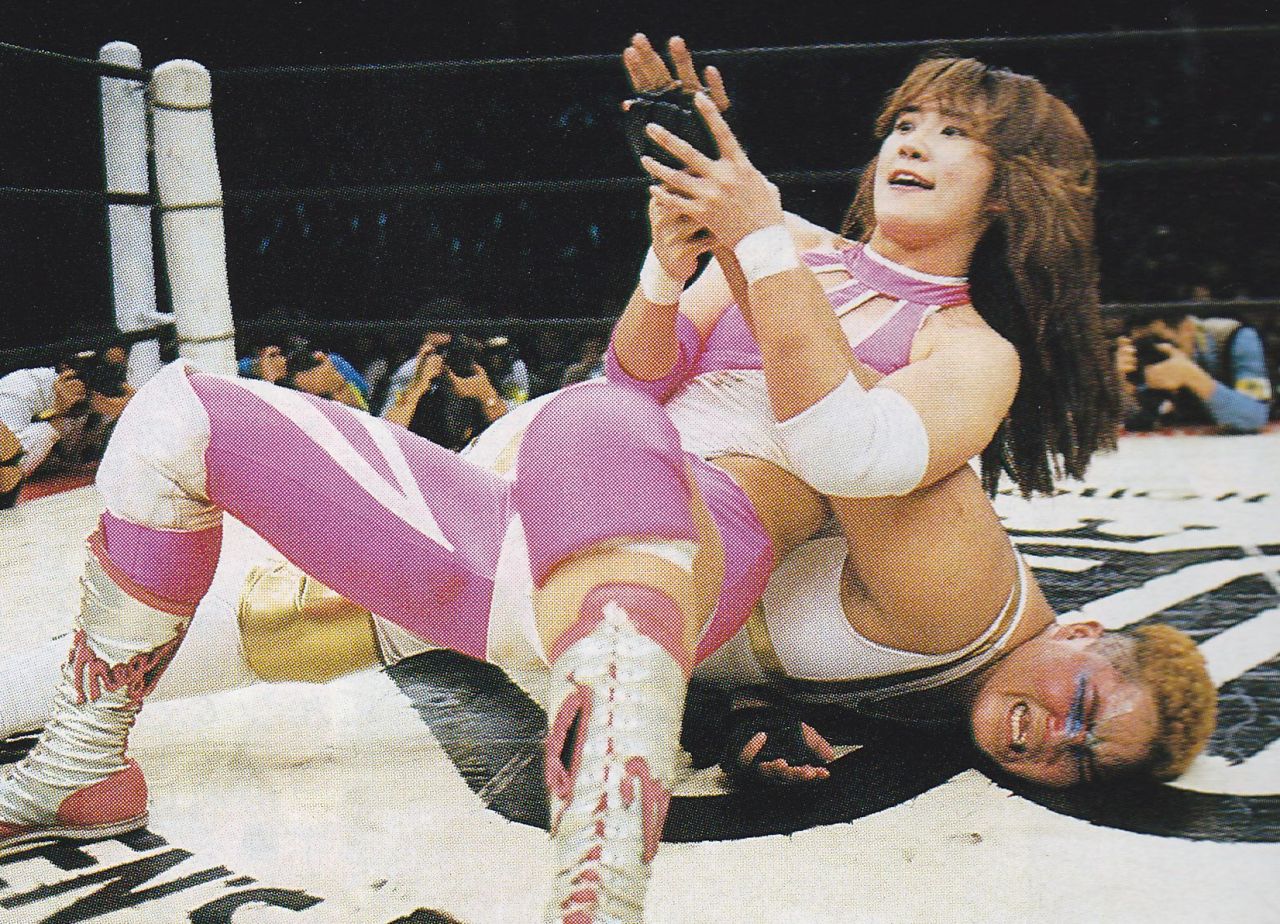
After the match, Kong lifted Kudo up, shook her hand, hugged her, and called out to their trainer, Jaguar Yokota, who had tears in her eyes as she sat at ringside as a guest commentator.
While the bulk of Megumi Kudo’s work as an in-ring competitor took place in FMW, it feels impossible not to mention her involvement with AJW, both at the start of her career and her reemergence in the company in 1993. Kudo would continue to make appearances in AJW in the years that followed, but there was a certain finality to her championship match against Aja Kong; From being released from AJW in 1988 to returning five years later and main eventing All-Star Dream Slam as FMW’s representative, to finally challenging for their top championship in December 1993, Kudo’s match against Kong closed that unfinished chapter of her wrestling career. And with her past finally firmly behind her, it was time for Kudo to cement her legacy as a deathmatch legend.
Shark Tsuchiya
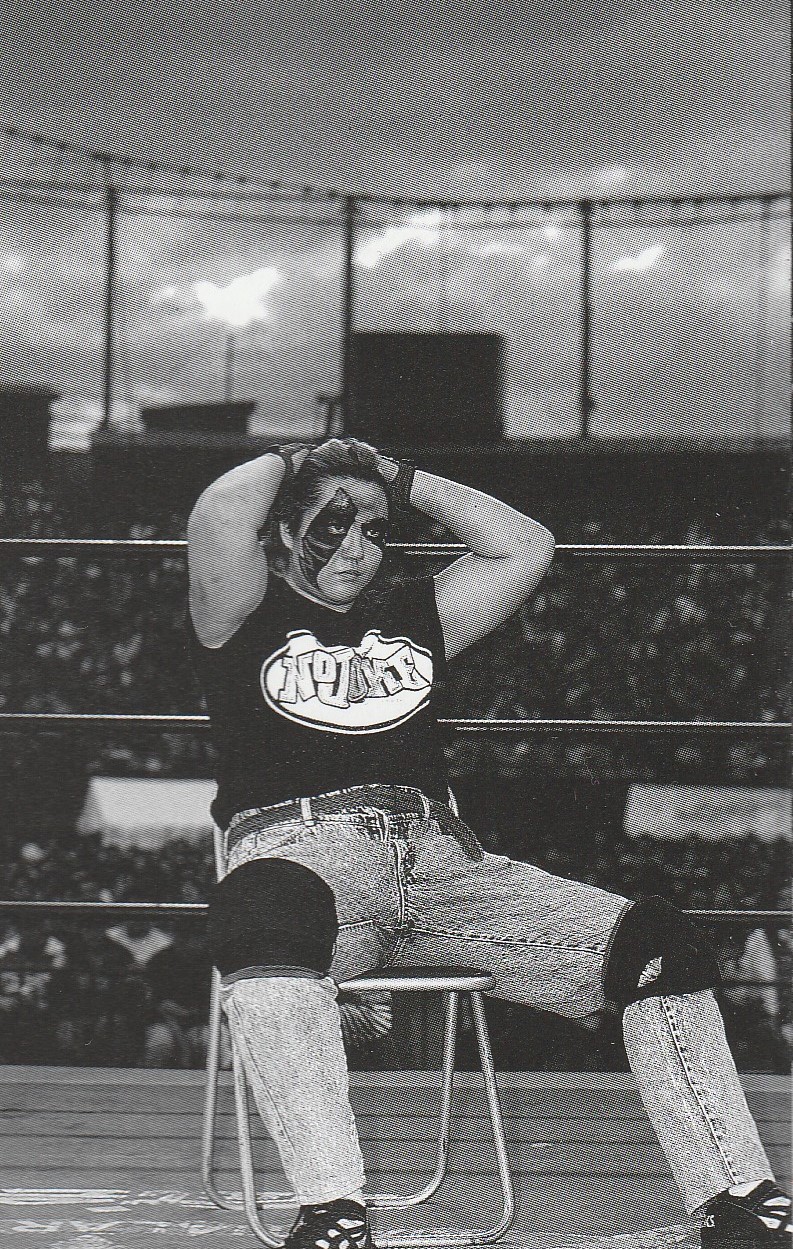
Moving on to perhaps the bloodiest enemy of Megumi Kudo throughout her time in FMW, Shark Tsuchiya was the most consistent enemy of Kudo from the time the Extreme Queen became a babyface in 1990 up until her very last match in 1997. According to Cagematch, of Kudo’s 880-plus matches in FMW, Shark Tsuchiya was on the other side of the ring for nearly 580 of them. While this was mostly due to the lack of depth in FMW’s female roster, it resulted in a rivalry unlike any other in the mid-1990s.
Tsuchiya’s initial grudge against Kudo stemmed from her time in the Combat Army alongside Yoshika Maedomari and Combat Toyoda in 1991. While she more or less acted as a henchwoman for Toyoda during this time, the heelish style and war paint that she adopted from this era would end up becoming her M.O. for the rest of her career. When the Combat Army disbanded in 1992, Tsuchiya was becoming became a major threat in FMW’s women’s division, winning her first WWA Championship in 1992 before promptly losing it to Megumi Kudo that same year. However, the beginning of Tsuchiya and Kudo’s heated rivalry didn’t quite start until the green-haired monster introduced the infamous Mad Dog Military to the world in 1993.
Alongside her loyal confidant Yoshika Maedomari, Tsuchiya’s Mad Dog Military brought back true bottom-of-the-barrel heelwork to the world of Joshi wrestling. Taking clear inspiration from the AJW’s Atrocious Alliance in the 1980s, Tsuchiya’s heelish ways were a perfect foil for Kudo, and the pair were at odds pretty consistently from that point forward. With that being said, the matches that defined Sharky and Megumi’s careers didn’t begin to take place until 1995 when the FMW women’s division reached brand new heights.
Contrary to popular belief, FMW’s women’s division used hardcore matches sparingly during Atsushi Onita’s time in charge. While the occasional street fight was used to highlight major matches for people like Kudo, it was relatively rare to see anybody in the division bleed. However, with Onita out of the picture, somebody in the company needed to take over his position as a top babyface deathmatch wrestler, and there were few competitors more capable than Megumi Kudo.
So, by pairing FMW’s most fundamentally sound babyface with their most ruthless heel in a string of deathmatches, FMW struck gold in 1995. From Kudo channeling The Great Muta in her singles match against Tsuchiya that July, to Shark spitting a fireball at Kudo as she stood chained to the ropes in September, it was clear that 1995 was the year of Kudo vs. Tsuchiya. So, the year ended in the most fitting way possible: An all-women’s show inside Korakuen Hall that saw Kudo defeat Shark Tsuchiya in a No-Rope Barbed Wire Deathmatch in the main event of the evening.
Kudo proved herself as a hardcore wrestler in her many exchanges with the Mad Dog Military leader, and the two have become synonymous as a result. When it came time for Kudo to retire in April 1997, it was still Shark Tsuchiya who did the honors as her final opponent. The two were the first women to main event a proper FMW event in history, and they went all out when they did. Though they didn’t reach the emotional peaks that Kudo had a year prior against Combat Toyoda (we’ll get to that), the match saw the Extreme Queen triumph over her bitter enemy once more with a Kudome Valentine to end her in-ring career.
In the years since, Tsuchiya and Kudo have publicized their close friendship, often participating in collaborative events and interviews. With FMW’s women’s division would quickly fizzle out following Kudo’s retirement, it’s hard to argue that Shark Tsuchiya vs. Megumi Kudo wasn’t one of the best rivalries to ever come from it. What Shark lacked in skill she made up for by being the antithesis of everything that Kudo represented, and she unleashed that fact on her each time they shared a ring; Tsuchiya consistently pushed Kudo out of her comfort zone and made the Extreme Queen a more complete wrestler in the process. Few people had a bigger impact on Megumi Kudo’s wrestling career than Shark Tsuchiya, and for that, she will always be a legend in my book.
Combat Toyoda
For me, it’s hard to look back at Megumi Kudo’s remarkable career without thinking about Combat Toyoda. In fact, when I first thought about writing this piece, it was just gonna be about the relationship between Combat Toyoda and Megumi Kudo. The two were inseparable from the beginning of their careers in AJW up until Toyoda’s retirement match in 1996, and their dual effort to try and transform FMW’s women’s division into one of the best on the planet could be seen throughout that time. So, for the final entry on this list, let’s talk about the relationship between Megumi Kudo and Noriyo “Combat” Toyoda.
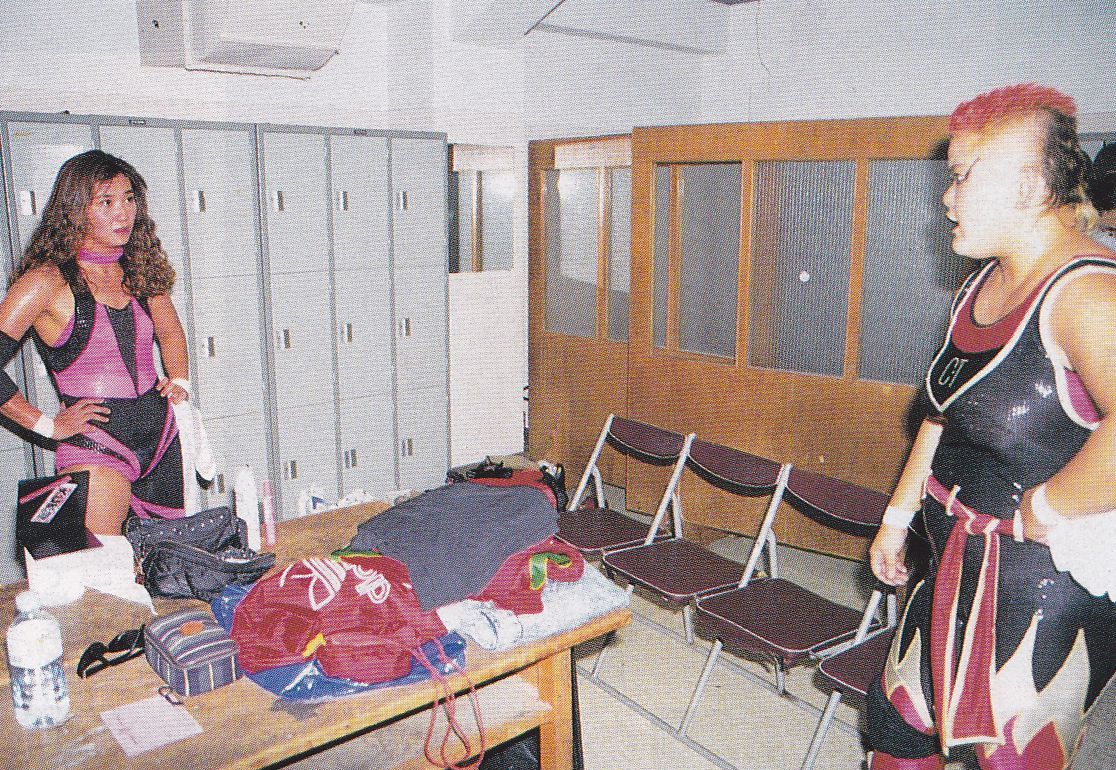
Now, unlike the previous entries, I’m not gonna dwell too much on their history of singles matches against one another. Although the two did battle numerous times over the years, many of those matches are not easily available to view, and they also don’t really capture the essence of the relationship between Kudo and Toyoda. Similarly, the various heel turns that Toyoda did at the expense of Kudo over their years in FMW don’t get that job done either. Instead, it is their relationship with the company of FMW itself that explains what made their partnership and rivalry so special.
As I mentioned various times throughout this article, Kudo and Toyoda both began their careers as part of the AJW Dojo Class of 1986 alongside legends like Aja Kong, Bison Kimura, and KAORU Maeda. However, as they and fellow classmate Reibun Amada left AJW near the end of the decade, Atsushi Onita contacted all three women to be the pioneers of FMW’s women’s division. Thus, The Outbreakers were born, with Kudo’s only work as a heel coming in the first four months of her tenure with FMW. The company soon realized that Kudo as a babyface going up against her two former dojo sisters was the smartest decision, so The Outbreakers didn’t last very long, and instead, a rivalry between Kudo, Aamda, and Toyoda began. From then, Amada left wrestling again, this time for good, at the end of 1990, leaving Kudo and Toyoda to feud over the newly introduced WWA Women’s Championship moving forward.
To say that Kudo and Toyoda were clearly the top stars of FMW’s women’s division would be an understatement. From the time FMW sanctioned the WWA Women’s Championship in 1990 up until the title went inactive in 1997, not a single calendar year went by without either Combat Toyoda or Megumi Kudo getting their hands on the belt. Beyond this, both women aided in the development of the less experienced FMW stars upon their arrival to the company in 1990, with Kudo eventually becoming the full-time trainer of FMW’s female athletes in 1994, as well. The love that both women had for the company consistently shined through, and when Toyoda was set to retire in 1996 and she chose Kudo as her final opponent, it was only fitting that the match was a love letter to Frontier Martial-Arts Wrestling.
The No-Rope Exploding Barbed Wire Deathmatch between Megumi Kudo and Combat Toyoda took place at FMW’s 7th Anniversary inside Kawasaki Stadium in front of over 30,000 cheering fans. Before the match, each woman shared her thoughts, with Toyoda’s words capturing the true nature of her retirement match:
“This day has finally come. Now, I just have to give it 100%. I’m nervous, but I have to give it my all. There’s been a lot of ups and downs, but this fight between me and Kudo is very symbolic… This is the ultimate deathmatch. I want to remember Onita’s spirit, and do my best in my last match… To all the fans and younger wrestlers, I hope you can feel my spirit.”
Combat Toyoda, May 5th, 1996
With the temporarily retired Atushi Onita at ringside, Combat Toyoda made her entrance using his theme song, Wild Thing, as she tearfully made her way to come face to face with Kudo. This was the first and only proper deathmatch the two ever had against one another, but their goal to express their feelings was undoubtedly achieved. The typical evasiveness of Megumi Kudo and hesitation of Combat Toyoda led the match to be a more technically intense endeavor early on, with the looming threat of the barbed wire in the background up until Kudo was thrown back first into the wire, triggering the first explosion of the match. It didn’t take long for Combat to suffer the same fate, completely cutting open her left arm and revealing the true danger of the match.
As Toyoda’s condition worsened, she looked to Onita in the crowd before executing two Thunder Fire Powerbombs that only claimed a two-count. Then, in perhaps the most gruesome spot of the match Kudo ran at Toyoda, hitting a hip attack that sent both women into the barbed wire and setting off the biggest explosion yet. As both women struggled to get to their feet, it was Kudo who was just barely quicker on the draw, delivering a Tiger Driver ‘98, a move she had used to great success in the past, but Toyoda kicked out. Then it was Kudo’s turn to honor the god of the deathmatch, delivering both a Thunder Fire Powerbomb and finally a Kudome Valentine to defeat her rival, her partner, her roommate and her friend, Combat Toyoda.
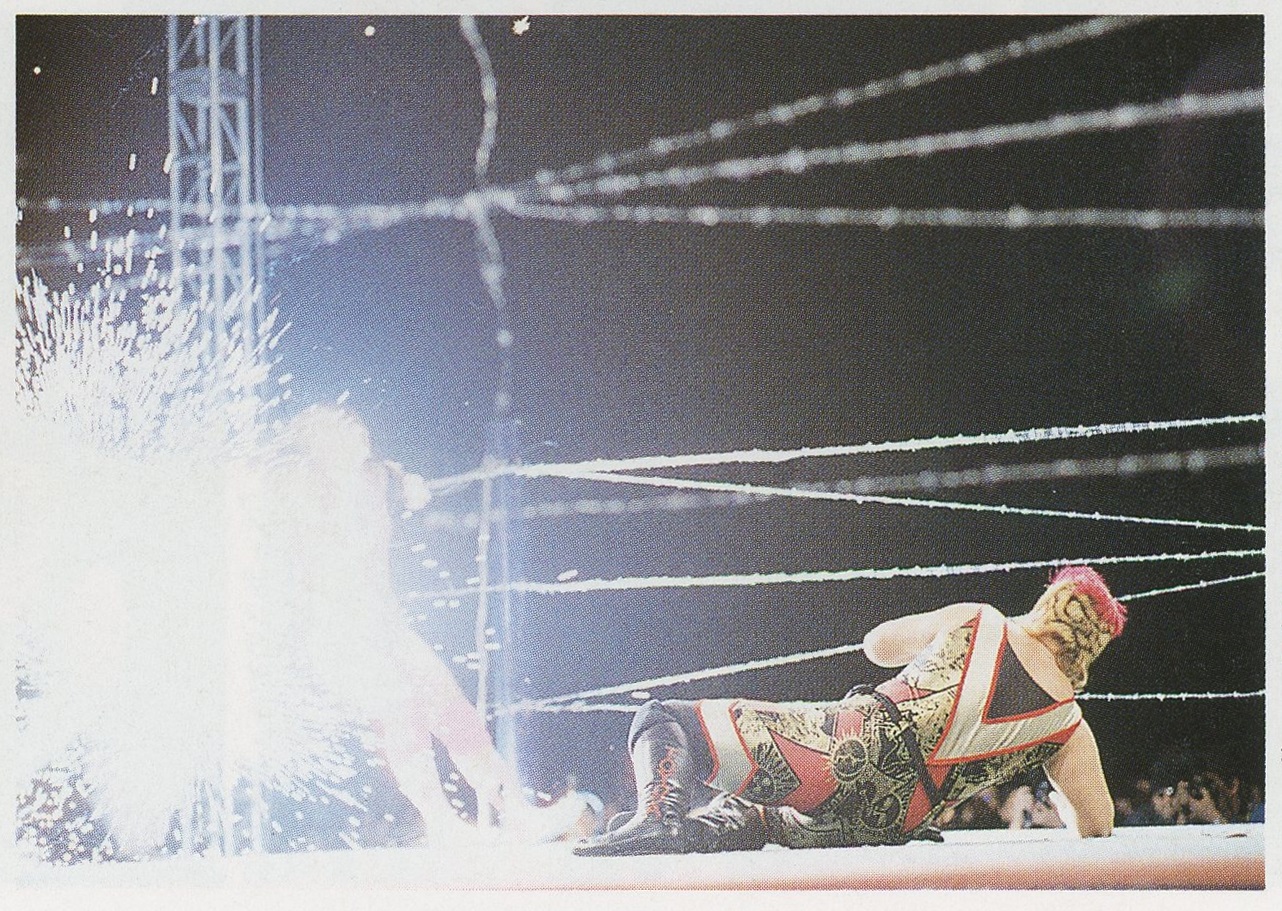
Both Kudo and Toyoda were unable to get to their feet, and as Wild Thing echoed throughout the arena, Atsushi Onita tended to the fallen competitor, dumping buckets of water on them as he did after many of his deathmatches. While Kudo was taken away on a stretcher, Onita carried Toyoda to the back as fans cheered on the two greatest women’s wrestlers in FMW history.
When I first saw the final battle between Kudo and Toyoda, I was certain that it was my favorite wrestling match of all time. And even now, having seen much more wrestling than I had when I was 17 years old, it remains easily within my top five. While its use of the exploding barbed wire was relatively simplistic to today’s standards, there is something about the bond that Toyoda and Kudo had, both with each other and with FMW, that makes this match so special. After both women were brought backstage, Onita looked on from across the room as Kudo crawled over toward Toyoda. As the injured pair cried together, it left a lasting image of how much they were willing to give to one another in honor of their beloved company; Bloody Valentines until the very end.
Stay tuned to the Five Star Network for all updates on the world of Joshi, Puro, and more!

